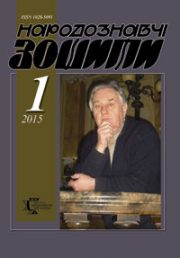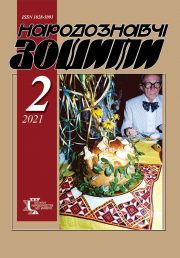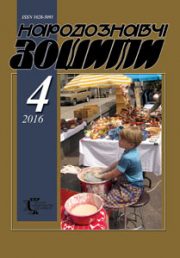The Ethnology Notebooks. 2022. № 6 (168), 1386—1403
UDK [[76:741.5]:929.7](477.83=161.2)”18/19″
DOI https://doi.org/10.15407/nz2022.06.1386
IZHEVSKYY Artur
- ORCID ID: http://orcid.org/0000-0003-2949-1723
- Doctor of Sciences in History, Senior Researcher
- in the Department of Historical Art
- of the Institute of Ethnology
- of the National Academy of Sciences of Ukraine,
- 15, Svobody Avenue, 79008, Lviv, Ukraine,
- Contacts: e-mail: Aizhevsky@gmail.com
Abstract. The satirical graphics of Halychyna illustrated and mocked the transformation of the noble and aristocratic world of Ukraine and Central-Eastern Europe in the middle of 19th — early 20th centuries in the context of changes in the social order. The moral and ethical transformation of the nobility became the cause of evolutionary processes in the artistic system of the genre of satirical graphics
The purpose of this article is to investigate the evolution of the artistic aesthetics of the satirical graphics of Galicia in the reflection of the Ukrainian nobility. Definition of the identity, traditions and consciousness of the origin of the nobility on the example of works of graphic and verbal satire.
The object of the study is the graphic image (as a part of the verbal) of the nobility in Galicia, its attraction to the Ukrainian, Polish, Austrian, and all-European.
The subject of research is the satirical graphics of Galicia in the middle of the 19th and early 20th centuries.
Chronological limits — refer to 1850—1914. The importance of graphic art in the reflection of the urbanization processes of Galicia and Europe in the first half of the 19th century is also emphasized.
Territorial boundaries of the study — the historical lands of Galicia — its ethnic Ukrainian territories. The development of satirical graphics in the cities of Ukraine and Europe, where masters of drawn satire, whose work is connected with Galicia, studied and worked is taken into account.
Research methodology — with the help of the comparative characteristics of satirical graphics, an analysis of the evolution of the image of the nobility is built over a period of more than 50 years. When individual fragments of these artifacts are damaged, the graphic reconstruction method is used.
For the cartoonist, the contrast of different artistic forms turned out to be appropriate and relevant for contrasting various aspects of nobility in graphics: adherence to the traditions of conservatism, understanding or misunderstanding of national identity, consciousness of origin, where moral and ethical principles are opposed to material and social aspects. The Ukrainian nobility depicted in Galician satire cherished its heroic past, but managed to adapt to the world of free market and free elections like the majority of the European aristocracy.
Keywords: Ukrainian nobility (aristocracy), satirical graphics, Galicia.
Received 13.07.2022
REFERENCES
- Chornovol, I. (2002). The Ukrainian faction of the Galician Diet. Lviv [in Ukrainian].
- Zholtovsky, P. (1970). Beginnings of Ukrainian cartoons and caricatures. October, 3, 120—121 [in Ukrainian].
- Milyaeva, L. (1971). Paintings by Potelich. Moscow [in Russian].
- Ovsiychuk, V.A. (1967). Lviv portrait of the XVI—XVIII centuries (exhibition catalog 1965) (Pp. 4—10).Kyiv [in Ukrainian].
- Vereshchagin, V.A. (1911). Russian caricature (Vol. 1). St. Petersburg [in Russian].
- Kornilova, A. (1990). World of landscape drawing. Moscow [in Russian].
- Hnatyuk, V. (1920). Manuscript humorous magazines. ZNTSH (Pp. 148—167). Lviv [in Ukrainian].
- Kasiyan, V., & Turchenko, Yu. (1961). Ukrainian pre-October realistic graphics. Kyiv [in Ukrainian].
- Figol, M.P. (1974). Political satire in Ukrainian art of the late 19th and early 20th centuries. Kyiv: Art [in Ukrainian].
- Demchenko, E.P. (1980). The satirical press of Ukraine 1905—1907. Kyiv: Naukova dumka [in Russian].
- Gorska, H., & Lipinski, E. (1977). From the history of Polish caricature. Warzawa [in Polish].
- Andrusiak, M. (1938). Where did the nobility come from in our lands? Lviv [in Ukrainian].
- (1883). Ridiculous. Calendar «Enlightenment» (Pp. 104—112). Lviv [in Ukrainian].
- (1896). «Smigus» calendar (P. 21). Lviv [in Polish].
- Swoboda, J. (1842). Lvivianin (Pp. 3—4, 82—83). Lviv [in Polish].
- Monchalovskyi, O. (1906). Manuscripts archive — located in the manuscripts department of the National Academy of Sciences of the Stefanyk National Academy of Sciences [in Ukrainian].
- Snitzarchuk, L. (1998). Ukrainian satirical and humorous periodicals of the second half of the 19th century. Collection of works of the scientific research center of periodicals (P. 162). Lviv [in Ukrainian].
- Vahnyanin, A. (1908). Memories from life (Pp. 42—43). Lviv [in Ukrainian].
- Dobrovolsky, T. (1986). History of Polish painting. Moscow: Art [in Russian].
- (1881). Szczutek, 26 [in Polish].
- (1873). Szczutek, 7 [in Polish].
- (1902). Thoughts of a boy philosopher. Antichrist, 4, 7—10 [in Ukrainian].
- Kolupaeva, A. (2002). Genre scenes in folk tiling. Ethnological notebooks, 1—2 [in Ukrainian].
- (1901). How many of us are in eastern Galicia? The New Age, 128, 12 [in Polish].
- (1902). From the editors. Haydamaka, 1, 1—2 (manuscript magazine) [in Ukrainian].







